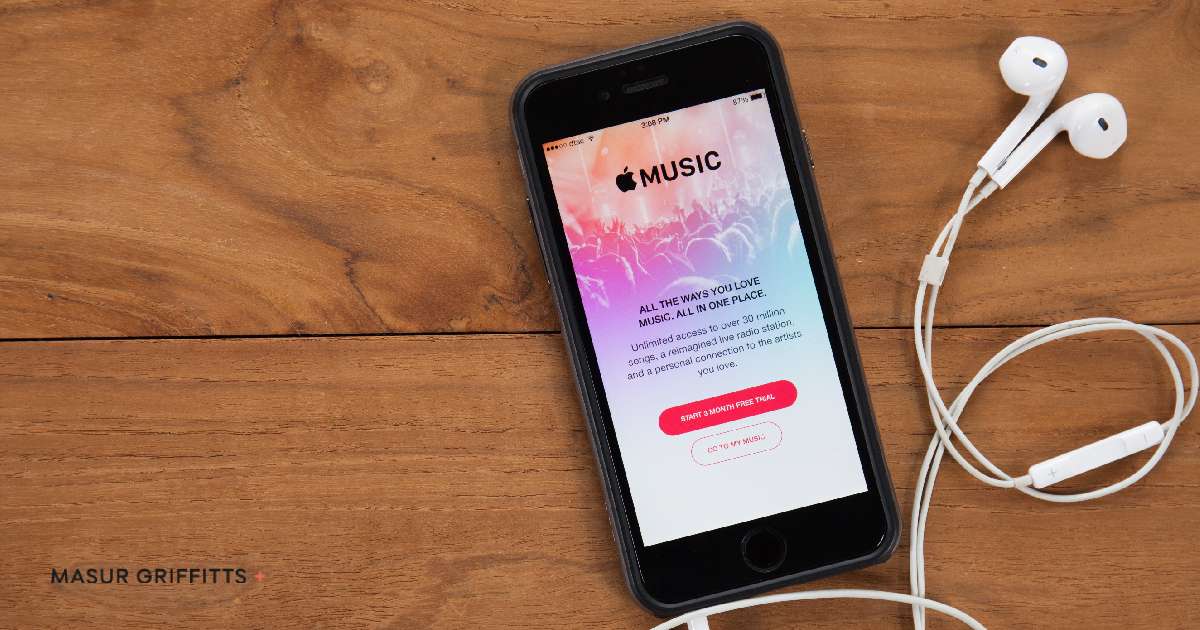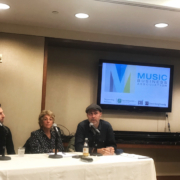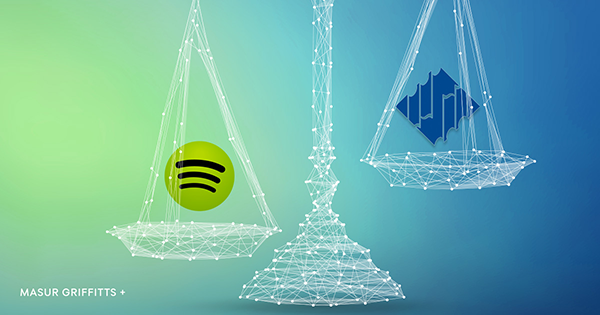By: Jon Avidor
On December 29, 2017, Wixen Music Publishing, Inc. filed a $1.6 billion lawsuit against Spotify USA Inc. The complaint alleges that Spotify willfully infringed copyrights in thousands of songs, including songs from artists Tom Petty, Neil Young, and The Doors. The timing of the lawsuit is particularly problematic since Spotify plans to go public on April 3, 2018. But the suit also brings up another issue: the inadequacy of music licensing laws in the digital age.
How Music Licensing Works
Music is protected by copyright law. The Copyright Act of 1976 protects two types of copyrights in a recorded song: the musical composition and subsequent sound recordings. The composition consists of the music, together with any accompanying lyrics. The sound recording occurs when an artist records the performance of the musical composition. The Copyright Act grants certain exclusive rights, such as the right to reproduce, distribute, and perform publicly or by digital transmission, to the copyright holders, such the the composer and/or lyricist or a publisher and recording artist or its recording label.
An interactive streaming service, such as Spotify, must obtain a license for both the sound recording and underlying musical composition in order to reproduce and distribute songs. Revenue from the recording license is paid to the owner or licensor of the sound recording, usually the artist or, more commonly, the artist’s label. Revenue from the composition license, known as a mechanical license, is paid to the owner or licensor of the composition, i.e., the composer and/or lyricist or music publisher, and allows the licensee to reproduce and distribute songs on CDs, records, permanent digital downloads (e.g., through iTunes), or interactive streaming services. To obtain a mechanical license, a licensee can negotiate directly with the copyright owner/licensor or get a compulsory license under which, in certain circumstances, the owner/licensor must grant permission to use the work either in a cable television rebroadcast, by PBS, in jukeboxes, for performance of master recordings on digital radio, and in phonorecords or digital downloads. The compulsory mechanical licensee must provide a Notice of Intention and remit a predetermined mechanical royalty, referred to as the statutory rate, to the copyright owner/licensor, again most commonly the publisher.

Wixen v. Spotify
Wixen Music Publishing, Inc., an independent music publisher that administers the copyrights of more than 50,000 songs, filed a lawsuit on December 29, 2017 in the U.S. District Court for the Central District of California against interactive music streaming service Spotify (Spotify USA Inc.). The complaint alleges that Spotify obtained the sound recording rights, but did not obtain the composition rights, to the songs available for streaming to its more than 140 million active users and, as a result, Spotify illegally profited off of songwriters and publishers without obtaining and paying for a license.
Wixen alleges that Spotify relied on the Harry Fox Agency (HFA), a music licensing and royalty service, to obtain the required mechanical licenses but failed to do so as HFA “did not possess the infrastructure to obtain the required mechanical licenses.” Wixen stated that Spotify knew of HFA’s inability to secure the licenses but continued to exploit the unlicensed songs anyway thereby committing copyright infringement by making “unauthorized reproductions and engag[ing] in unauthorized distribution of the copyrighted musical compositions of Wixen’s client.”
Wixen requests $1.6 billion in damages, or $150,000 per composition, which is the maximum amount of statutory damages for willful copyright infringement, for each of the 10,784 musical compositions Wixen claims were infringed. Wixen also requested an injunction against Spotify’s continued unlicensed use of the songs and demanded Spotify establish procedures to enable it to comply with the Copyright Act.
This isn’t the first lawsuit of this type that Spotify has faced. In June 2017, Spotify reached a $43.5 million settlement in an unpaid royalty class action in Ferrick v. Spotify USA Inc. Maybe Taylor Swift was right when she knew Spotify was trouble when she walked in.
The Need for Music Copyright Reform
Whether Spotify’s alleged copyright infringement was knowing or willful or not, streaming services can only really be commercially successful if it maintains an extensive catalog of music and that poses a logistical compliance nightmare that copyright statutes have not adequately addressed in the digital age of music. Forbes estimates that, under the current licensing regime, interactive streaming services, like Spotify, Apple Music, and Google Play, have to file over 10,000 Notices of Intention per day. The volume of Notices of Intention, coupled with unreliable, missing, or conflicting data as to ownership and rights in many songs, deteriorates this anachronistic licensing framework.
However, there’s a bill working its way through Congress that might just shine bright like a diamond. Introduced in the House of Representatives by Rihanna Rep. Doug Collins (R-GA) on December 21, 2017, the Music Modernization Act (MMA) is meant to “provide clarity and modernize the licensing system for musical works” under Section 115 of the Copyright Act, which relates to compulsory licensing, and to establish fair rates and fees for mechanical royalties for that purpose. An identical bill was introduced in the Senate by Senators Orrin Hatch (R-UT), Lamar Alexander (R-TN), and Sheldon Whitehouse (D-RI) on January 24, 2018. The bills provide for:
- Blanket Licenses: The proposed legislation eliminates the requirement under Section 115 for digital music providers to notify each copyright owner in exercising a compulsory license and instead provides for a blanket license from copyright owners through a mechanical licensing collective that will establish a database of musical works and the identity and address of the copyright owners or licensors. The MMA would provide certain protections against infringement actions for digital services who comply with the terms of the blanket license.
- Standards for Determining Mechanical Royalty Rates: Currently, the Copyright Royalty Board sets the statutory rate for compulsory licensing, but the current legal standard does not consider market value. Under the proposed legislation, the legal standard will be replaced with one accounts for free-market conditions.
- Random Assignment of Rate Court Proceedings: Instead of each performing rights organization (i.e., ASCAP, BMI) being assigned to a single federal rate court in New York to determine reasonableness of rates, the MMA proposes to have a district judge in proper jurisdiction be randomly assigned to settle rate disputes.
- Evidence for Public Performance Royalties: The current Section 114(i) prohibits rate court judges from taking into account recording royalty rates as a benchmark when setting performance royalty rates. Under the proposed legislation, performing right organizations and songwriters would be able to present this evidence to obtain fairer rates.
The U.S. Copyright Office conducted a study in 2016 titled “Copyright and the Music Marketplace” that provided recommendations for reforming the existing licensing framework, many of which have been integrated into the Music Modernization Act.
The National Music Publishers Association (NMPA) released a statement of support, alongside me than 20 music industry organizations including RIAA, the Recording Academy, ASCAP, BMI, and SAG-AFTRA, endorsing the Music Modernization Act, the CLASSICS Act, the AMP Act, and a market-based rate standard for artists from satellite radio. These bills have not come without criticism, namely concerns that they would give more power to the already powerful music publishers to the determent of songwriters. The flip side of this argument, as The Verge notes, is that the MMA “prevents lawsuits like Wixen v. Spotify. If a streaming service sets aside the money it’s trying to allocate to a songwriter it can’t find, it can’t be sued later on for not finding the songwriter.” Whether the MMA is flawed or not, the music industry has been sitting, waiting, wishing for a copyright law that reflects how digital music is distributed and consumed, and if you believed in superstitions then maybe the MMA is a sign.
*We would like to thank our intern Torie Levine for her contribution to this article.






